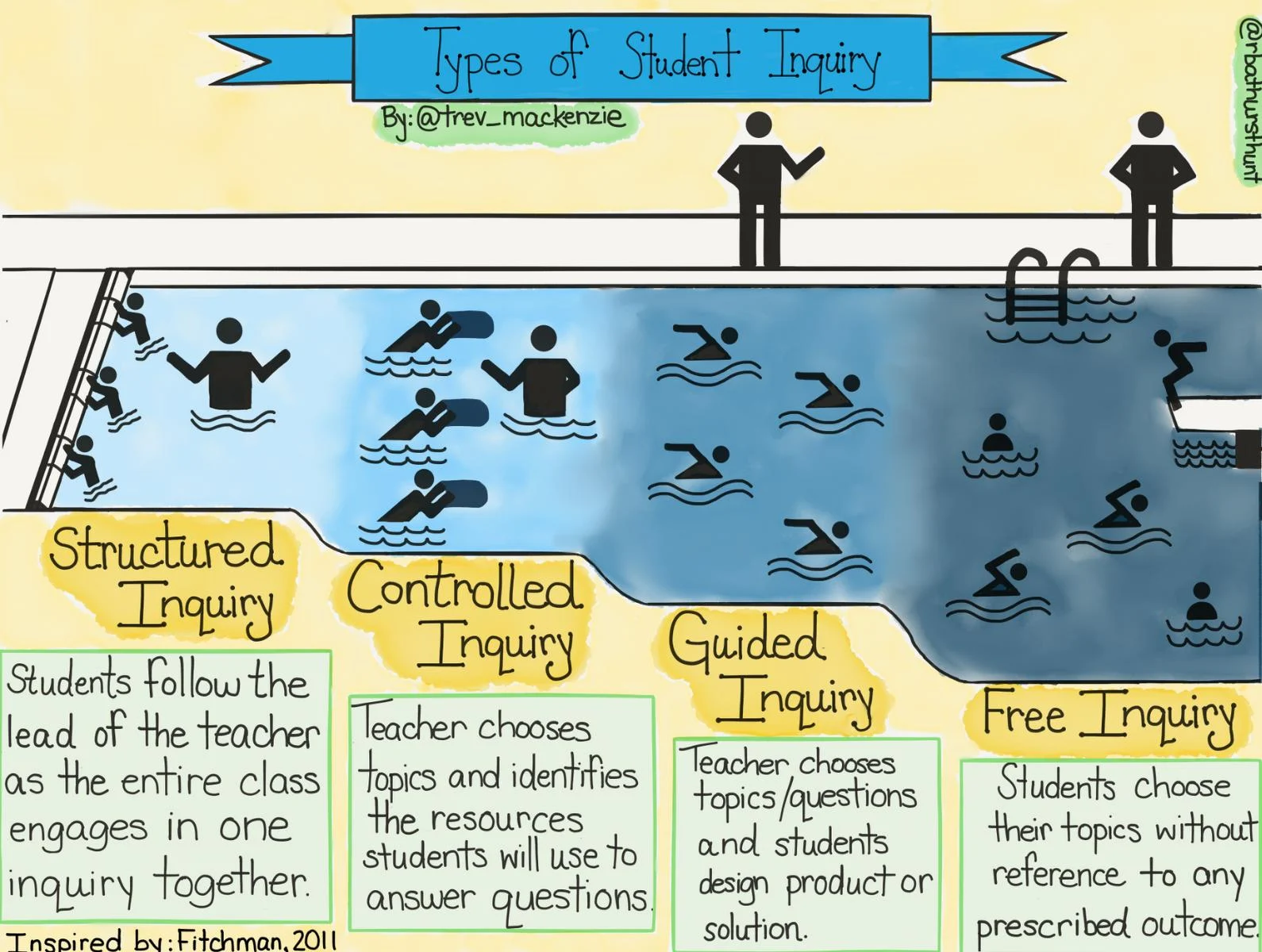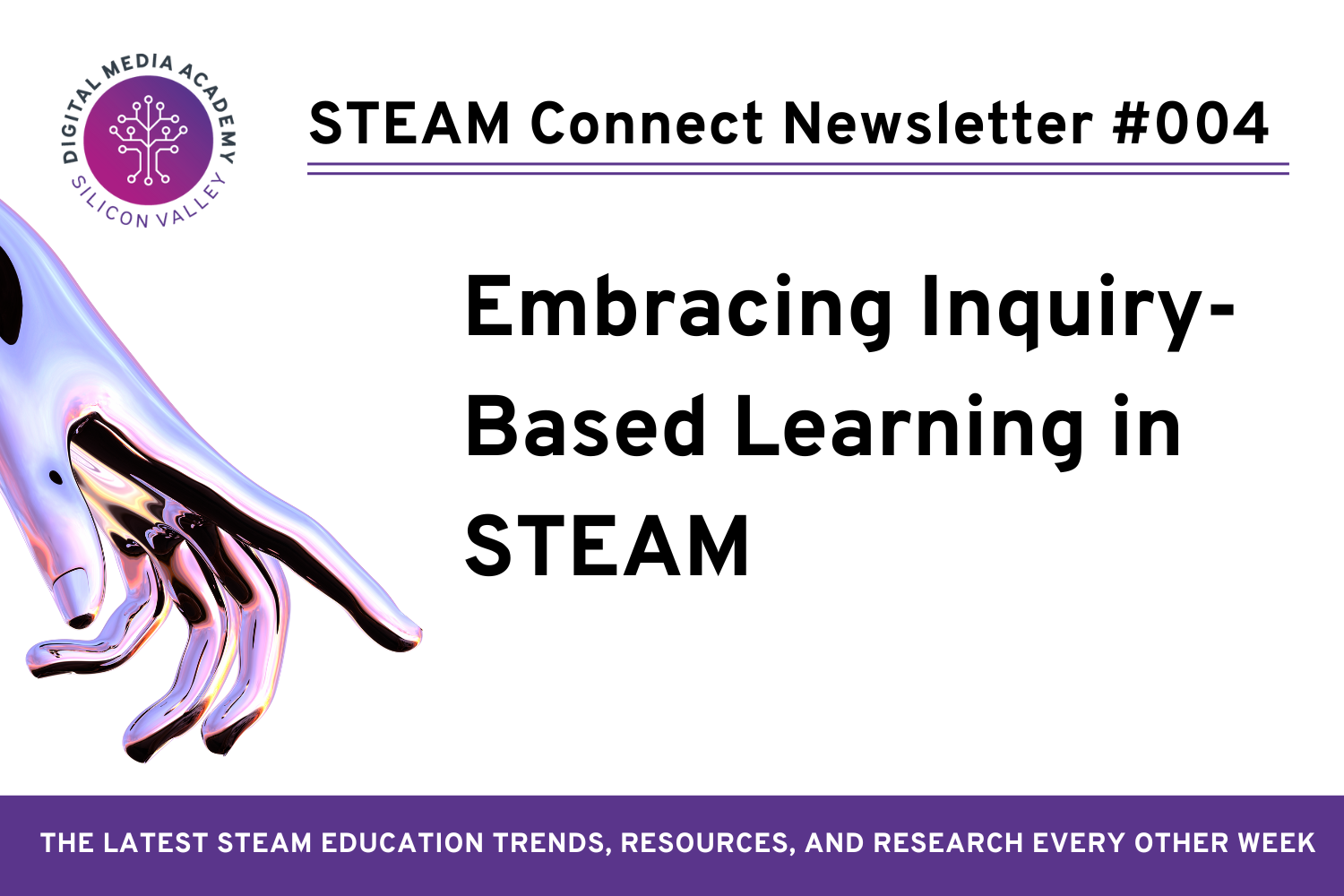Happy New Year!
I hope you’re all getting into that post-holiday rhythm.
(Unless you’re in the Southern Hemisphere and about to head into summer break, then know that the rest of us are jealous.)
Regardless of your school calendar, I hope you’re ready for a more STEAM filled classroom.
Today we’re talking about combining inquiry-based learning and STEAM concepts.
Let’s dive in 🪸
~ Sarah
Embracing Inquiry-Based Learning in STEAM
Imagine this: your classroom buzzes with excitement. Students aren’t passively receiving information; they’re diving deep into real-world problems, driven by their own burning questions, and fuelled by the power of STEAM.
This is the magic of bringing inquiry-based learning into your STEAM curriculum.
Traditional STEAM teaching is boring.
We don’t need to convince you of the benefits of STEAM. However, just bringing some STEAM activities into your class isn’t going to cut it.
Marshmallow towers, Arduino projects, and other hands-on experiences are fantastic, but to truly unlock the potential of STEAM education, we need to delve deeper.
What is Inquiry-based Learning (IBL)?
IBL isn’t simply handing out experiments and hoping for sparks. It’s a shift in the power dynamic, empowering students to take charge of their learning. They formulate questions, design investigations, analyze data, and draw conclusions – all while honing their critical thinking, collaboration, and problem-solving skills.
Picture a middle school science class investigating the water quality of a local river. Through IBL, they’re not just memorizing facts about PH levels; they’re collecting samples, testing water parameters, and even proposing action plans to address pollution concerns. This engagement leads to a deeper understanding and real-world impact.
Starting with IBL can feel daunting. Concerns about pacing, curriculum alignment, and assessment are valid. Yet, the more we can put our students in the driver’s seat, the more they can take ownership of their learning journey.
The good news is that there is a scaffolded approach.

Types of Student Inquiry
Educator, Trevor Mackenzie, does a wonderful job at explaining the different types of student inquiry in this sketch graphic above.
Most educators unwittingly stop at the first one or two types. With this scaffolding you can take to prepare yourself and your students for a fully free inquiry project at the end of the school year.
Bringing IBL into your classroom
➟ Give students the reigns: Go over the required curriculum outcomes and help students identify questions that drive curiosity and connect to authentic STEAM problems.
➟ Embrace exploration and experimentation: Provide diverse resources and encourage creative approaches to finding answers.
➟ Nurture collaboration and communication: Design activities that foster teamwork and support peer learning. Such as opportunities to share learning with each other and teach each other.
➟ Encourage meaningful reflection and metacognition: Guide students to reflect on their learning process, analyze their thinking, and make adjustments for future inquiry. Provide prompts for written reflections, journal entries, or group discussions.
➟ Assess learning in authentic ways: Move beyond traditional tests and celebrate the journey of inquiry, not just the final answer. Better yet, include students in the assessment process. How would they like to be assessed? Have them design it.
Wrapping up
Inquiry-based learning increases student engagement, boosts critical thinking skills, and enhances problem-solving abilities. With this approach, students become self-directed learners, confident in their ability to tackle challenges and innovate.
For educators already using inquiry, this scaffolded approach provides a structured yet flexible framework to deepen the impact of inquiry-based practices.
We encourage you to incorporate it into your STEAM teaching.
Full STEAM Ahead! 🚆
There are 3 ways we can help your school with your STEAM Programming:
🌍 Bring Students to Global Innovation Race on-campus at Stanford University (July 17-27th)
Fuel your students’ passion for technology and innovation while future-proofing their skills with the summer experience of a lifetime! Global Innovation Race is an international call to action for student groups (aged 13-17) across the globe to design solutions that will shape the future. Space is limited. Learn more here!
🌐 Join Leading STEAM Schools in the World
Developed by Stanford-affiliated educators and researchers, Leading STEAM Schools in the World (LSSW) Membership helps schools and educators meet the ever-evolving needs of 21st-century learners. Membership is customizable, combining comprehensive curriculum, tailored consultation, and a supportive global community of like-minded schools.
💡 Become a STEAM Innovator Accredited School
Our STEAM Innovator School Accreditation recognizes and promotes excellence in STEAM education worldwide while empowering educators and schools to achieve the highest standards of quality and innovation in STEAM curriculum, instruction, and assessment.























